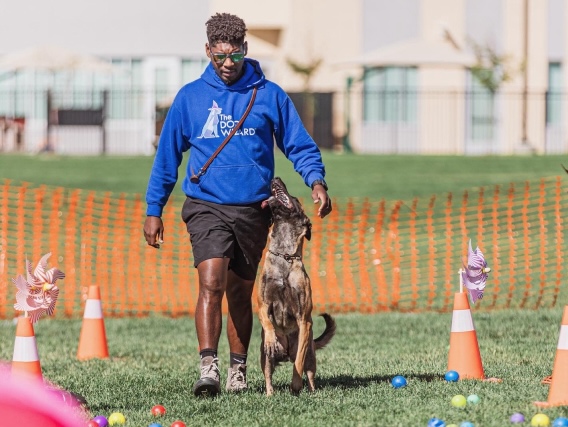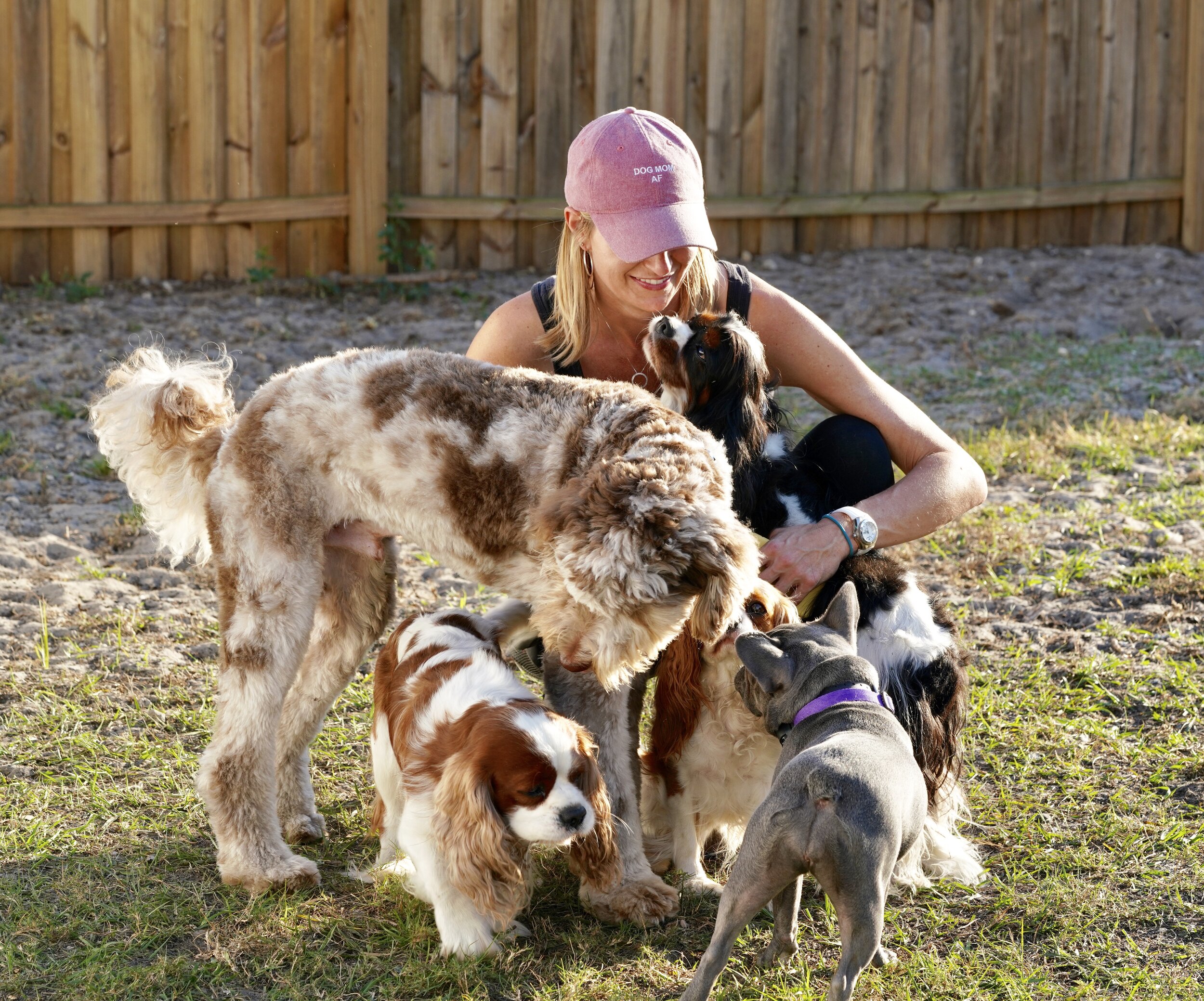The Role of Socialization in Dog Training for Better Behavior
Wiki Article
Beginner's Overview to Successful Canine Training in your home
Successfully training a pet at home requires a nuanced understanding of canine actions and reliable interaction techniques. Establishing clear training goals, utilizing high-grade incentives, and maintaining uniformity across member of the family are vital aspects. Incorporating training right into daily regimens can improve both interaction and retention. Nevertheless, numerous amateur fitness instructors run into obstacles that might hinder progress. To browse these complexities effectively, it's vital to check out numerous essential facets that can transform your strategy and bring about an unified relationship with your family pet. What fundamental principles should every beginner grasp to make certain success?Recognizing Dog Habits
Understanding pet dog actions is necessary for efficient training and promoting a harmonious connection between humans and their canine friends. Canines interact largely through body movement, articulations, and facial expressions, making it vital for owners to translate these signals precisely. Recognizing behaviors such as tail wagging, growling, or trembling can give understandings right into a pet's emotion and purposes.
Common behavior issues, such as hostility, anxiety, or extreme barking, often stem from misconceptions or unmet demands. Observing and dealing with these concerns immediately can protect against acceleration and ensure a positive training experience. By cultivating a deep understanding of dog actions, proprietors can customize their training methods to fit their canine friends, eventually bring about a well-behaved and satisfied pet dog.
Important Training Devices
A fully equipped training area can dramatically improve the efficiency of pet dog training in your home. Necessary training tools ensure that both the dog and the fitness instructor can participate in effective sessions that promote knowing and bonding.
Purchasing a tough leash and a comfy, well-fitting collar or harness is vital for safety and control. These tools aid develop boundaries and guarantee the pet continues to be safe throughout training. Additionally, a marked training area, totally free from diversions, aids focus for both the canine and the trainer.
Educating aids such as training pads, cones, or dexterity devices can additionally enhance the experience by presenting range and challenges. Lastly, having a notebook or electronic application for tracking progress can be vital, enabling you to keep in mind successes and areas for improvement. Utilizing these crucial devices will develop a positive training atmosphere and lay the foundation for reliable understanding.
Developing a Training Routine
Developing a consistent training routine is vital for efficient canine training in your home. A well-structured regular not only assists in reinforcing preferred behaviors but also offers your pet dog with a complacency and predictability. To create an effective training regular, begin by determining details training objectives, such as standard commands, chain walking, or house-training.Pick a marked time each day for training sessions, ideally when your pet is sharp and receptive. Procedure ought to be brief, around 5 to 15 mins, to keep emphasis and protect against exhaustion. Uniformity in timing and setting will certainly boost your dog's understanding experience.
Incorporate training into everyday activities to enhance skills. Practice commands during walks or nourishment, which integrates learning into all-natural regimens. In addition, remain versatile and change the regular as required, accommodating your canine's energy levels and mood.
Favorable Support Strategies
Favorable support strategies are essential to efficient pet dog training, advertising wanted habits with incentives instead than penalty. This approach uses positive stimuli, such as treats, praise, or playtime, to encourage pets to duplicate certain actions. The foundation of this approach is timing; benefits must be given immediately adhering to the desired behavior to develop a clear organization.When executing positive support, it is vital to choose incentives that are inspiring for important source your canine. High-value treats, such as tiny pieces of hen or cheese, can be particularly effective throughout training sessions. Furthermore, differing the rewards can maintain your pet dog's rate of interest and excitement.
Start with basic commands, like "sit" or "remain," and slowly development to more intricate jobs. Consistency is vital; ensure that all household members use the very same commands and incentive systems to stay clear of complication.
In addition, it is essential to continue to be individual and avoid frustration. Canines, like human beings, learn at their very own rate. By promoting an encouraging training atmosphere via favorable support, you can improve your dog's understanding experience while enhancing the bond in between you and your hairy buddy, preparing for successful training end results.
Typical Training Difficulties
While training a dog in the house can be a rewarding experience, it often includes a set of common difficulties that can test both patience and consistency. One prevalent concern is diversion. Canines may come to be easily sidetracked by sounds, movements, and even aromas in their setting, making it tough to keep their focus during training sessions.An additional challenge is inconsistency in commands and support. If relative make use of investigate this site various hints or incentives, it can prevent and perplex the dog development. Establishing a unified method is crucial for reliable interaction.
Furthermore, pet dogs can experience aggravation or anxiety, particularly if they do not recognize what is anticipated of them. This can bring about unwanted habits, such as barking or chewing.
Finally, the timing of reinforcement is important (Dog training). Postponed incentives can lessen the performance of positive reinforcement, as pet dogs may fail to attach the behavior with the benefit
Getting rid of these difficulties requires commitment, clear interaction, and an organized training plan. Identifying and resolving these common obstacles will lead the means for a more successful and enjoyable training experience in your home.
Conclusion
To conclude, effective dog training in your home requires a detailed understanding of canine actions and effective communication approaches. By developing clear like it training objectives and utilizing high-grade deals with along with favorable support, the training procedure comes to be much more fulfilling for both the instructor and the dog. Versatility, uniformity, and persistence are essential elements that assist in discovering. Inevitably, integrating training right into daily regimens improves the bond in between dog and proprietor, making the experience both effective and delightful.Developing a consistent training regimen is vital for reliable pet dog training at home.Positive reinforcement strategies are fundamental to reliable canine training, advertising preferred actions through rewards instead than penalty (Dog training). By cultivating an encouraging training environment with favorable support, you can enhance your pet dog's learning experience while reinforcing the bond in between you and your fuzzy companion, laying the foundation for effective training end results
In verdict, successful dog training at home demands a thorough understanding of canine habits and efficient interaction approaches. By establishing clear training objectives and making use of premium treats alongside favorable support, the training procedure comes to be more satisfying for both the instructor and the pet.
Report this wiki page